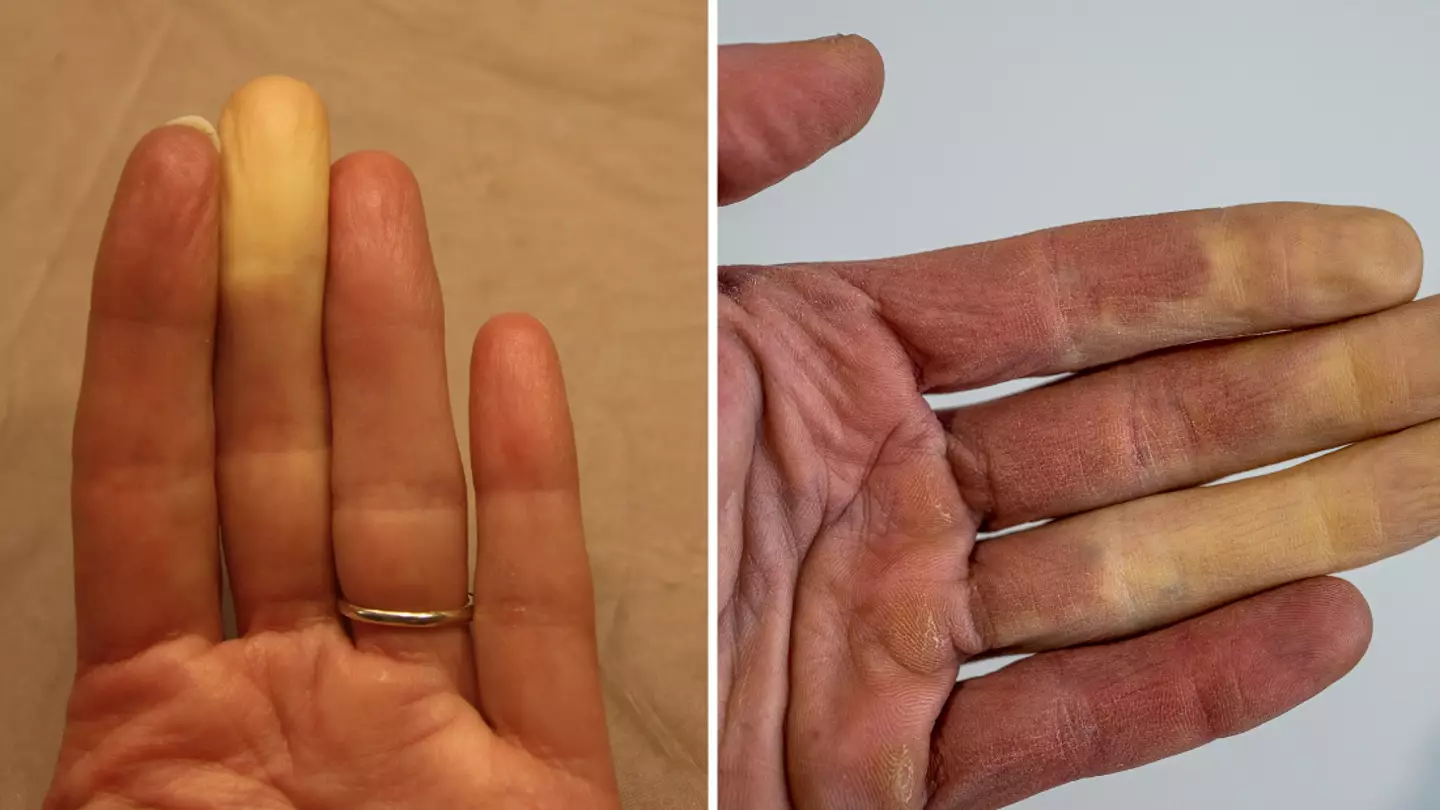Raynaud’s (ray-NOSE) disease causes some areas of the body — such as fingers and toes — to feel numb and cold in response to cold temperatures or stress. In Raynaud’s disease, smaller blood vessels that supply blood to the skin narrow. This limits blood flow to affected areas, which is called vasospasm.
Other names for this condition are:
- Raynaud’s phenomenon.
- Raynaud syndrome.
Women are more likely than men to have Raynaud’s disease. It seems to be more common in people who live in colder climates.
Treatment of Raynaud’s disease depends on how bad it is and whether you have other health conditions. For most people, Raynaud’s disease isn’t disabling, but it can affect your quality of life.

Symptoms of Raynaud’s disease include:
- Cold fingers or toes.
- Areas of skin that turn white then blue. Depending on your skin color, these color changes may be harder or easier to see.
- Numb, prickly feeling or stinging pain upon warming or easing of stress.
During an attack of Raynaud’s, affected areas of the skin usually first turn pale. Next, they often change color and feel cold and numb. When the skin warms and blood flow improves, the affected areas may change color again, throb, tingle or swell.
Raynaud’s most commonly affects fingers and toes. But it also can affect other areas of the body, such as nose, lips, ears and even nipples. After warming up, the return of blood flow to the area can take 15 minutes.
When to see a doctor
See your healthcare professional right away if you have a history of severe Raynaud’s and get a sore or infection in one of your affected fingers or toes.